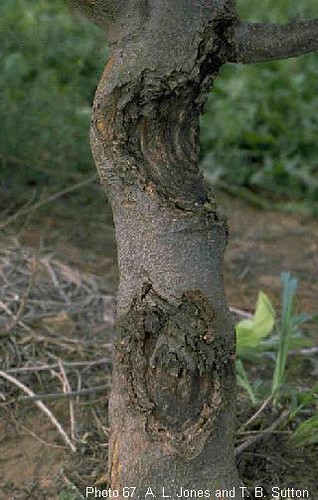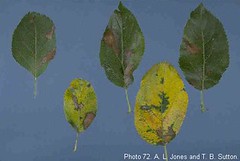Nectria canker is a fungus disease caused by Nectria galligena. Occasionally, it is found on apple nursery stock shipped into the eastern United States; however, the economic effects of the disease in the region are minor.
| Figure 1. Nectria cankers on trunk of ‘Delicious’ apple. Photo: Alan L. Jones, Michigan State University. |
|---|
 |
The fungus grows deep into the wood and kills new wound callus as it develops. This annual killing of successive layers of callus results in perennial, target-like, zonate …

